Alumni
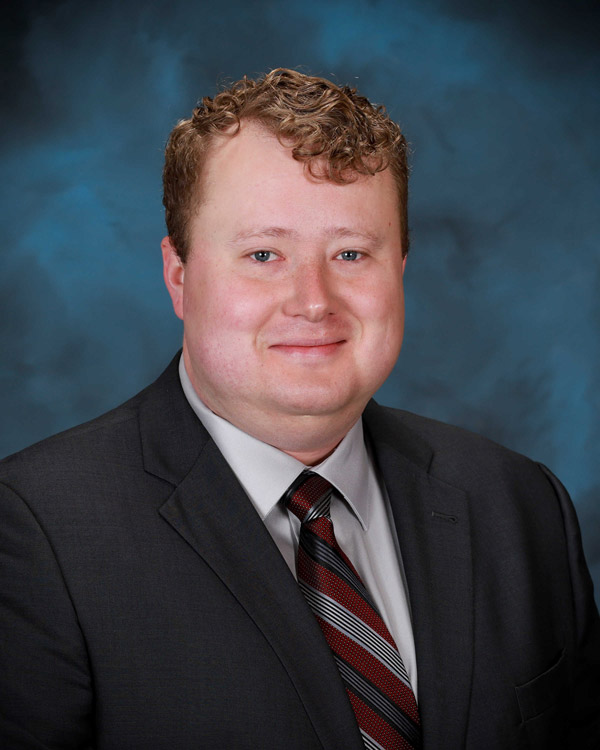 William Brad O'Dell, NC State University
William Brad O'Dell, NC State University
I completed my Ph.D. in Biochemistry in August 2017 under the supervision of Dr. Flora Meilleur and after spending more than three years in-residence at the Neutron Sciences Directorate, Oak Ridge National Laboratory for my thesis research. In October 2017, I began a National Research Council (NRC) Post-Doctoral appointment at the National Institute of Standards and Technology (NIST) in Gaithersburg, MD. I am working in the Macromolecular Structure and Function Group (Materials Measurement Laboratory) which resides at the Institute for Bioscience and Biotechnology Research, a joint institute between NIST and the University of Maryland.
My research at NIST/IBBR focuses on understanding how organisms respond to replacing natural-abundance hydrogen with the isotope deuterium. Deuterium enrichment in biological materials is often necessary for effective neutron scattering studies of biomolecular structure and dynamics. We expect that characterizing deuterium-induced effects will provide a basis for producing previously unobtainable deuterium-labeled biomolecules in quantities suitable for neutron scattering experiments.
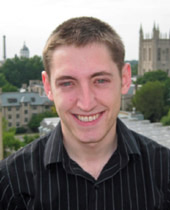 Andrew Miskowiec, University of Missouri
Andrew Miskowiec, University of Missouri
The role of water in biological systems is fundamental. In fact, the interaction of water with proteins is the driving force for determining their ultimate shape. This protein folding problem is front and center in biology and medicine as many diseases are caused by proteins adopting an incorrect shape and being unable to perform their function. As an attempt to shed light on the question of water in biological systems, we used quasielastic neutron scattering to study the motion of water in the vicinity of model cell membranes. The detailed, atomic scale information that can be obtained from these measurements can provide foundational knowledge for future studies with proteins and larger molecules. Currently, I am a post-doc at Oak Ridge National Laboratory in the Nuclear Science and Engineering Directorate. I am extending my knowledge of quasielastic neutron scattering by studying the motion of water in uranium compounds. These materials behave similarly to concrete, adopting new structures and curing over the course of months or years. We can document the changes in the motion of water inside these materials to fingerprint their age.
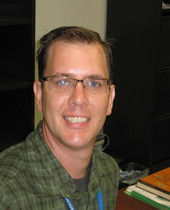 Paul Stonaha, Indiana University
Paul Stonaha, Indiana University
I am a postdoctoral researcher in the Scattering & Thermophysics group at Oak Ridge National Lab. Together with my mentor, Dr. Mike Manley, I will be investigating phonon excitations in relaxor ferroelectric and strain-glass materials. Near their critical temperatures, these materials exhibit a frustrated electromechanical structure that can be influenced through minor changes in fabrication. We will conduct inelastic neutron scattering measurements of these materials on beamlines such as the ARCS beamline at the Spallation Neutron Source and on the HB3 beamline at the High Flux Isotope Reactor.
During my participation in the IGERT program, I worked under Dr. Roger Pynn at Indiana University. We designed, fabricated, and tested several generations of electromagnets for use in a neutron spin echo technique known as Spin Echo Scattering Angle Measurement (SESAME). I collaborated with the Baker group (Dr. Lane Baker) in the IU chemistry department to fabricate and image samples of porous anodic alumina, which I then studied using SESAME. The results set standards for the acceptable q-range when studying high aspect-ratio samples using SESAME and demonstrated the advantages of using wide-angle polarization analyzers for spin echo measurements.
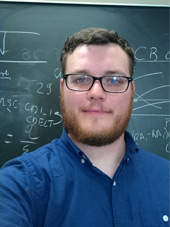 Matt Connolly, University of Missouri
Matt Connolly, University of Missouri
I am a research assistant in the Alliance for Collaborative Research in Alternative Fuel Technologies (ALL-CRAFT), which studies activated carbon as a storage material for hydrogen and natural gas. I am particularly interested in the "breathing" mechanism in adsorbent materials such as activated carbon and Metal Organic Frameworks (MOFs) in which the pore structure of the material responds to the presence of adsorbate. We are using neutron diffraction measurements to determine the breathing of a new Graphene Oxide Framework material. The goal is to elucidate the structural response of breathing adsorbents as a function of adsorbate loading pressure, and correlate the response to adsorption isotherms. New insights into this correlation can provide direction toward the development of new well-performing adsorbent materials.
I have been awarded a National Research Council (NRC) post-doctoral fellowship to work at the National Institute of Standards and Technology (NIST) in Boulder, CO. I will be using the neutron-scattering knowledge gained through the IGERT program towards studies of hydrogen embrittlement and subsequent hydrogen-assisted fatigue crack growth in pipeline steel. The proposed work will combine neutron diffraction, neutron imaging, and inelastic neutron scattering techniques to understand the mechanism behind hydrogen embrittlement of pipeline steel. The goal is to develop models to predict the lifetime of hydrogen-carrying pipeline steel and further the understanding necessary for the development of corrosion-resistant pipeline materials. The neutron scatting measurements will be performed at the University of Missouri Research Reactor (MURR), Oak Ridge National Laboratory (ORNL), and the NIST Center for Neutron Research (NCNR). The fellowship begins December 2014.
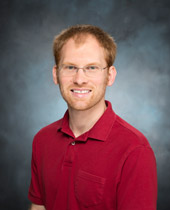 Tyler Fears, Missouri University of Science and Technology
Tyler Fears, Missouri University of Science and Technology
The National Ignition Facility (NIF) at Lawrence Livermore National Laboratory (LLNL) is the world’s most energetic laser source, where low density metal foams (10-30 mg/cc) have been shown to efficiently convert high intensity optical radiation to X-rays for a variety of applications. My postdoctoral position at LLNL deals with fabricating new low-density metal foams and aerogels for use as NIF targets in order to produce high-intensity monochromatic X-rays at desired energies. In addition to fabricating low-density metal targets, I am investigating the physical and chemical mechanisms involved in the synthesis of low-density metals and ceramics in order to better tailor their properties and realize materials not previously observed.
